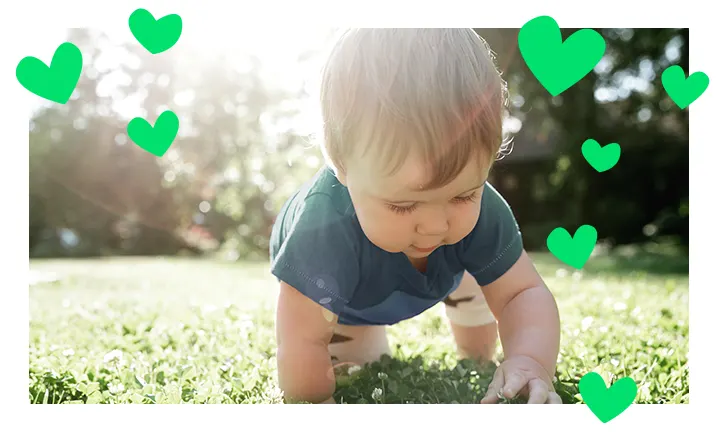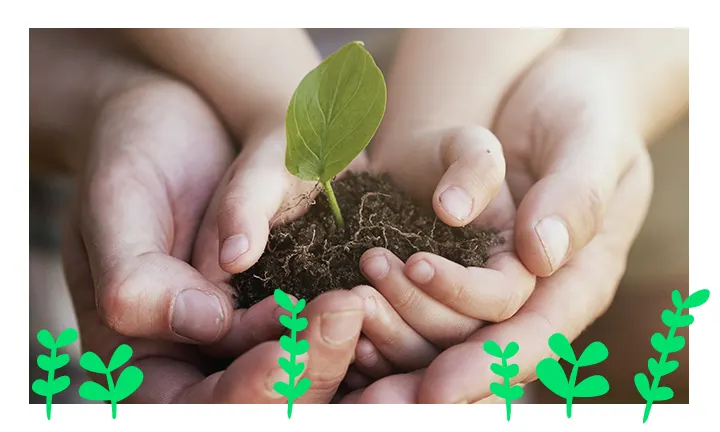Sustainability at Pampers!
We believe that together, we make babies’ world better. We have been caring for the happy, healthy development of babies worldwide for over 50 years, providing safe, high-quality products that millions of parents, caregivers, healthcare professionals and communities trust every day.
And we understand that many parents are concerned about how disposable nappies and wipes would fit into the need for sustainable living. Environmentally conscious parents are thinking beyond the next nappy change and consider their overall environmental footprint.
Pampers Journey
At Pampers we share the belief that parents shouldn’t have to choose between what’s good for their baby and what’s good for the planet. We’re devoted to playing our part to lessen the burden on environment while making baby’s world a better place. But we can’t do it alone—that’s why we’re embracing the world’s challenges with science, innovation, and partnership, all inspired by the love that parents have for their babies.
We are on a journey to learn how to achieve lower carbon, less waste and a brighter future for every baby, and their planet. We set ourselves global goals that we call Big Acts of Love which reflect our 2030 ambitions.
Our Global 2030 Ambitions
Pampers Big Acts of Love - Our 2030 Ambitions: These are the goals we have set ourselves for the decade ahead globally.
Love every baby
We’re devoted to giving every baby a safe, healthy and happy start in life.
Lead Goal: Continue to provide safe, high-quality products and drive ingredient transparency whilst ensuring trusted performance.
Love every baby
Help premature babies get the best possible start in life by supporting1 them, their parents and neonatal experts.
Love low carbon
We’re determined to take action on climate change as part of our company’s Net Zero GHG emissions by 2040 Ambition.
Lead Goal: Actively contribute towards our company’s target to reduce emissions across our operations by 50% and across our supply chain by 40%2.
Love low carbon
Work towards 50% sustainable and/or bio-based, recycled and renewable materials in our nappies & wipes. Continue reducing virgin-petroleum-based plastics in our packaging by 50%3.
Love less waste
We’re dedicated to reducing nappy waste through innovations, educational programs and partnerships
Lead Goal: invest $10 million in partnerships and alliances to help accelerate on waste solutions for the industry. Share our learnings to help accelerate our industry towards less waste.
Love less waste
Continue to invest in innovation that reduces material usage over the time period a baby is in a nappy4. Provide education to empower parents to use and dispose of nappies and wipes responsibly.
2Scope 1 and 2 targets from a 2010 baseline, Scope 3 target from a 2020 baseline. Our Scope 3 2030 goals, submitted to SBTI for approval, are as follows: Reducing supply chain emissions from priority categories by 40% per unit of production by 2030. P&G priority categories account for over 90% of P&G’s supply chain emissions. Reducing global upstream finished product freight emissions intensity by 50% by 2030.
3Baseline is 2017.
4Where science tells us we can have the greatest reductions in the environmental impacts of our products.
5Where facilities exist.
Read more about Safety and Commitment
Join Pampers Club and get:





